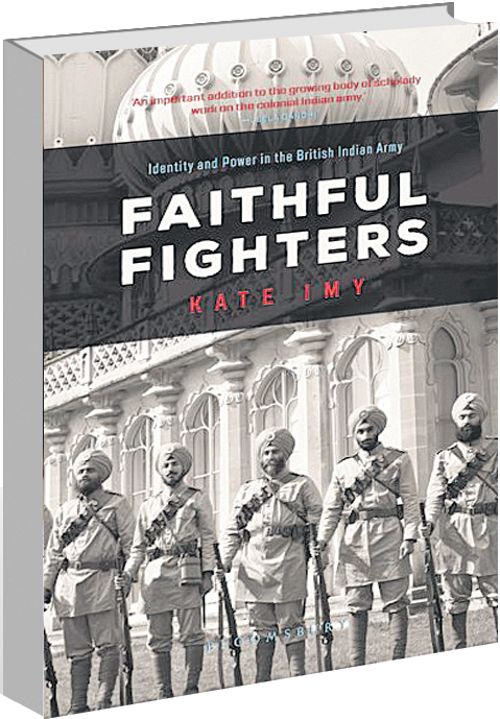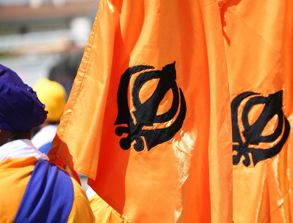Faithful Fighters: Identity and Power in the British Indian Army by Kate Imy. Bloomsbury. Pages 311. Rs 699
Book Title: Faithful Fighters: Identity and Power in the British Indian Army
Author: Kate Imy
Maj Gen Raj Mehta (Retd)
One tentatively flips the less-than-impressive jacket and enters Prof Kate Imy’s world of compelling South Asian cultural history predicated on the pseudo-ethnological construct of ‘martial races’, of which the Sikhs were one but not the sole part. One gets hooked as she examines the ham-handed manipulation of ‘martial’ soldiers for brazen imperial gains by the British colonial army in India.
Imy commands respect for her 84-page primary source array of official documents and private memoirs of officials and soldiers to tell her story. On finishing the book, one can only smile recalling the adage: don’t judge a book by its cover.
A recall on ‘martial races’ is mandated. With the ‘white man’s burden’ racial swagger punctured by the cataclysmic 1857 Mutiny, the British saw the races that remained ‘loyal’ as better suited in their calculus of imperial military service as opposed to the educated, high-caste, politicised hence ‘disloyal’ classes from Bengal/Central Provinces where the Mutiny manifested. Popularised by Field Marshal Frederick Roberts, with Winston Churchill a latter-day supporter, it homed in on, above all, the ‘martial’ Sikhs, Punjabi Muslims, Nepali Gurkhas, Hindu Jats, Dogras, Garhwalis, Pathans and Afridis.
Ironically, the ‘Madrassis’, without whose bravery and steadfastness south and east India couldn’t have been won, were unceremoniously dumped post the 1799 Seringapatam Tipu annihilation and the 1803 Assaye Battle victory. Assaye was where his ‘Veer Madrassis’ saved ‘Iron Duke’ Gen Wellington from the Marathas, a battle he’d recall as his “closest fought battle, including Waterloo”.
The ‘Purbiyas’ (Awadhis/Biharis) and Rajputs were dumped, too, but recruited again for World War I in which 14 lakh South Asians fought for ungrateful/callous Britain and World War II, in which 24 lakh South Asians from all classes were recruited to ensure an Allied victory.
The British pragmatically avoided confronting the Sikh Empire in the 19th century, but in the closely-fought wars that followed, employed subterfuge to succeed; the Sikh soldiery being let down by compromised leadership.
Kate Imy, in her book, exposes the amateurish, ever-changing post-1857 “martial race” machinations of the British military hierarchy.
The murky, unspoken subtext of the ‘martial race’ theory was that martial races were politically subservient, intellectually inferior and loyal; they lacked command ability and hence were easier to control. Praise, adulation and use of religious symbols or special sanctions were velvet gloves concealing imperial fists. The author emphasises that the soldiers saw through such clumsy British artifice, using the allotted privileges and spin-off benefits to serve their own ends.
She provides thought-provoking insight through six chapters examining how the colonial state viewed dominant ‘martial’ groups: the Sikhs, Nepali Gurkhas and Muslims. Their heavy recruitment gave such soldiers access to land, financial security, societal respect and opportunities for displaying martial prowess, attendant honours and awards. Prof Imy first engages with each community singly in three opening chapters, raising a key issue. Thus, for Sikhs, the question of the symbolic carrying of the kirpan; for Muslim soldiers, fully-paid-for pilgrimages like the Haj; and managing “kala pani” (crossing black waters) caste taboos by arranging caste-approved religious purification processes in Dehradun for Hindu Nepali Gurkhas. It was an arrangement easily circumvented by sending approved priests to Nepali Gurkha units.
Thereafter, she looks at the broader implications of the social and religious traditions of the three groups. Their often convoluted interactions with the colonial state needed them to fulfil global ambitions, yet ensured their social and political isolation, and their religious segregation. Imperial trust was thus never total. It was conditional and fluctuating.
These aspects become clearer over the last three chapters, which start with a fascinating glimpse of imperial food policies. Recall that Imy is a bench-marked professional on cultural history and food studies. She also examines how imperial need and greed brought about a breakdown of ‘martial race’ recruiting and seepage of militarisation in the South Asian civil society. “Divide and rule” was the norm but with baffling contradictions. As nationalism and anti-colonial attitudes hardened, segregation became desegregation even within the cantonments and new schools/academies such as the Royal Indian Military College, Indian Military Academy and King George Schools were created by the British military hierarchy for officers and soldiers’ education. Once, imperial thought had focused on ‘loyalty’ as a product of ‘illiteracy’ and ‘disloyalty’ and anti-colonial attitudes a fallout of education of soldiers. Yet, the policy was reversed completely.
Imy points out such discordant ‘to-and-fro’, wondering if imperial Britain had a master plan at all or bumbled along at conceptual and execution levels attaining success despite such crude systems of command, control and execution. She could’ve added that the British succeeded because their Indian manpower capital was world class.
The British military’s inability to think through led to creation of militant civilian entities such as the Bose-led Indian National Army (INA). The food-provoked 1946 naval ratings mutiny along with the INA irrevocably conveyed to the British that they’d broken their trust with India. Thoughtless leadership steeped in racial arrogance, poor understanding of religions and denying izzat to soldiers by suspecting their loyalties implied that the imperial hierarchy wasn’t true to its salt. ‘Faithful Fighters’ says it all.














